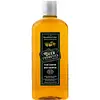What's inside
What's inside
 Key Ingredients
Key Ingredients

 Benefits
Benefits

 Concerns
Concerns

 Ingredients Side-by-side
Ingredients Side-by-side

Water
Skin ConditioningSodium Lauroyl Sarcosinate
CleansingCocamidopropyl Betaine
CleansingCoco-Glucoside
CleansingAcrylates Copolymer
Acrylates Crosspolymer-4
Emulsion StabilisingGlycerin
HumectantSalicylic Acid
MaskingSodium PCA
HumectantNiacinamide
SmoothingBetaine
HumectantPhenoxyethanol
PreservativeCapryloyl Salicylic Acid
ExfoliatingSodium Hydroxide
BufferingEthylhexylglycerin
Skin ConditioningTrisodium Ethylenediamine Disuccinate
Water
Skin ConditioningBeer
Skin ConditioningSodium Laureth Sulfate
CleansingCocamidopropyl Betaine
CleansingCoco-Glucoside
CleansingHumulus Lupulus Extract
AntimicrobialSodium Lactate
BufferingUrea
BufferingLactic Acid
BufferingHordeum Vulgare Seed Extract
Skin ConditioningSweet Almond Oil Polyglyceryl-4 Esters
SolventGlycerin
HumectantPropylene Glycol
HumectantStarch Hydroxypropyltrimonium Chloride
Emulsion StabilisingPanthenol
Skin ConditioningPolyquaternium-7
Levulinic Acid
PerfumingP-Anisic Acid
MaskingSodium Chloride
MaskingCitric Acid
BufferingParfum
MaskingPhenoxyethanol
PreservativeSodium Benzoate
MaskingPotassium Sorbate
PreservativeLinalool
PerfumingCaramel
Cosmetic ColorantWater, Beer, Sodium Laureth Sulfate, Cocamidopropyl Betaine, Coco-Glucoside, Humulus Lupulus Extract, Sodium Lactate, Urea, Lactic Acid, Hordeum Vulgare Seed Extract, Sweet Almond Oil Polyglyceryl-4 Esters, Glycerin, Propylene Glycol, Starch Hydroxypropyltrimonium Chloride, Panthenol, Polyquaternium-7, Levulinic Acid, P-Anisic Acid, Sodium Chloride, Citric Acid, Parfum, Phenoxyethanol, Sodium Benzoate, Potassium Sorbate, Linalool, Caramel
Ingredients Explained
These ingredients are found in both products.
Ingredients higher up in an ingredient list are typically present in a larger amount.
Cocamidopropyl Betaine is a fatty acid created by mixing similar compounds in coconut oil and dimethylaminopropylamine, a compound with two amino groups.
This ingredient is a surfactant and cleanser. It helps gather the dirt, pollutants, and other impurities in your skin to be washed away. It also helps thicken a product and make the texture more creamy.
Being created from coconut oil means Cocamidopropyl Betaine is hydrating for the skin.
While Cocamidopropyl Betaine was believed to be an allergen, a study from 2012 disproved this. It found two compounds in unpure Cocamidopropyl Betaine to be the irritants: aminoamide and 3-dimethylaminopropylamine. High-grade and pure Cocamidopropyl Betaine did not induce allergic reactions during this study.
Learn more about Cocamidopropyl BetaineCoco-Glucoside is a surfactant, or a cleansing ingredient. It is made from glucose and coconut oil.
Surfactants help gather dirt, oil, and other pollutants from your skin to be rinsed away.
This ingredient is considered gentle and non-comedogenic. However, it may still be irritating for some.
Learn more about Coco-GlucosideGlycerin is already naturally found in your skin. It helps moisturize and protect your skin.
A study from 2016 found glycerin to be more effective as a humectant than AHAs and hyaluronic acid.
As a humectant, it helps the skin stay hydrated by pulling moisture to your skin. The low molecular weight of glycerin allows it to pull moisture into the deeper layers of your skin.
Hydrated skin improves your skin barrier; Your skin barrier helps protect against irritants and bacteria.
Glycerin has also been found to have antimicrobial and antiviral properties. Due to these properties, glycerin is often used in wound and burn treatments.
In cosmetics, glycerin is usually derived from plants such as soybean or palm. However, it can also be sourced from animals, such as tallow or animal fat.
This ingredient is organic, colorless, odorless, and non-toxic.
Glycerin is the name for this ingredient in American English. British English uses Glycerol/Glycerine.
Learn more about GlycerinPhenoxyethanol is a preservative that has germicide, antimicrobial, and aromatic properties. Studies show that phenoxyethanol can prevent microbial growth. By itself, it has a scent that is similar to that of a rose.
It's often used in formulations along with Caprylyl Glycol to preserve the shelf life of products.
Water. It's the most common cosmetic ingredient of all. You'll usually see it at the top of ingredient lists, meaning that it makes up the largest part of the product.
So why is it so popular? Water most often acts as a solvent - this means that it helps dissolve other ingredients into the formulation.
You'll also recognize water as that liquid we all need to stay alive. If you see this, drink a glass of water. Stay hydrated!
Learn more about Water